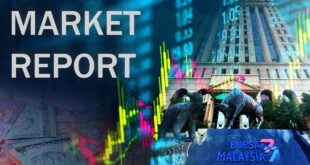SYDNEY: Asian shares hit one-year lows Monday as the risk of a wider conflict in the Middle East clouded sentiment in a week laden with data on U.S. growth and inflation as well as earnings from some of the world’s largest tech companies.
Bonds were also under pressure as U.S. 10-year Treasury yields crept to within a whisker of 5.0%, pushing borrowing costs up across the globe and testing equity valuations.
Washington warned over the weekend of a significant risk to U.S. interests in the Middle East as ally Israel pounded Gaza and clashes on its border with Lebanon intensified.
The European Central Bank and Bank of Canada also hold policy meetings and, while no hikes are expected, investors will be sensitive to guidance on futures moves.
The recent surge in bond yields has tightened monetary conditions without the central banks having to do anything, allowing the Federal Reserve to signal it will likely stay on hold at its policy meeting next week.
Indeed, futures imply around a 70% chance the Fed is done tightening for this cycle and are flirting with the chance of rate cuts from May next year.
The jump in yields has challenged equity valuations and dragged most of the major indices lower last week, while the VIX ‘fear index’ of U.S. stock market volatility hit its highest since March.
On Monday, MSCI’s broadest index of Asia-Pacific shares outside Japan slipped 0.5% to its lowest in almost a year. China’s blue chip index lost 0.6% to its weakest since early 2019.
Japan’s Nikkei eased 0.6%, as did South Korea’s market.
EUROSTOXX 50 futures and FTSE futures were flat. Both S&P 500 futures and Nasdaq futures added 0.2%, underpinned by hopes a rush of earnings reports this week will provide some support.
Mega caps Microsoft, Alphabet, Amazon and Meta Platforms are all reporting. IBM and Intel are also on the docket.
GROWTH SURGE
Profits should be supported by the strength of consumer demand with figures on U.S. gross domestic product this week expected to show annualised growth of a heady 4.2% in the third quarter, and nominal annualised growth possibly as high as 7%.
“At the same time, last quarter’s modest rise in hours worked points to a strong productivity gain and surge in corporate profits,” wrote JPMorgan chief economist Bruce Kasman in a note.
“As corporate and household income share the benefits of this nominal activity surge, the underlying resilience of the U.S. private sector is being reinforced.”
This U.S. outperformance has underpinned the dollar, though the threat of Japanese intervention has capped it around 150.00 yen at least for the moment. The dollar was last trading at 149.93 yen, just below the recent peak of 150.16.
Yields in Japan were also on the rise on speculation the Bank of Japan was discussing a further tweak to its yield curve control policy, which might be announced at its policy meeting on Oct. 31.
The euro was flat at $1.0578, while the Swiss franc held firm at 0.8946 per dollar having benefited from safe haven flows over the past couple of weeks.
Gold has likewise attracted a safety bid to stand at $1,973 an ounce, having hit its highest since May last week.
Oil prices gave back some ground in the absence of any disruption to supplies from the Middle East, at least for now.
Brent was last down 73 cents at $91.43 a barrel, while U.S. crude eased 82 cents to $87.26. – Reuters
 BeritaKini.biz Berita Viral Terkini di Malaysia
BeritaKini.biz Berita Viral Terkini di Malaysia





